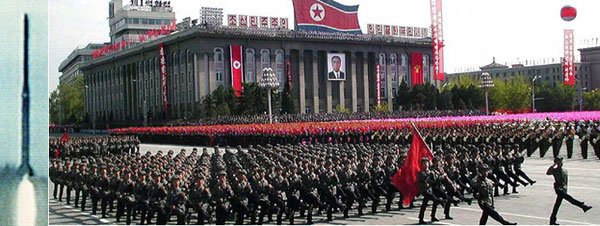Chapter 3
HISTORY: NORTH KOREA AND
ITS MILITARY BY CBC NEWS
Its economy is among the most controlled, although recent floods and famines have convinced the government to experiment with aspects of a market economy.
The Democratic People's Republic of Korea has had only two rulers in the past 50 years. Kim Il Sung ruled the country from 1948 until his death in 1994, when the country entered a three-year mourning period for the "Great Leader."
His son, Kim Jong Il, officially succeeded him in 1997, although he had been the de facto leader of the Workers Party of Korea since his father's death.
The country was created after the Second World War when Korea split into two, with the northern part coming under communist rule and the southern adopting more Western policies.
North Korean forces invaded South Korea in 1950, sparking the Korean War. That prompted the United Nations to authorize a "police action" led by the United States in an attempt to repel the North Koreans. Canadian, British, Turkish and other troops took part in the American-dominated UN force in Korea.
North Korean forces drove the South Korean and allied troops south in the early stages of the war, but the allies fought back, pushing the North Koreans toward the border with China. Chinese troops then entered the fray and reclaimed the territory the North Koreans had lost. A 1953 cease-fire agreement established a demilitarized zone between the two Koreas, which is still in place today.
Military Threat

The Korean People's Army is made up of 1.2 million troops, making it the fourth-largest military in the world. North Korea spends more than 30 per cent of its gross domestic product on its military. About 37,000 of those troops guard the demarcation line between the two Koreas.
When the CBC's Raymond Saint-Pierre visited Pyongyang in 2001, he said "thousands of soldiers swarm the city."
The country's largest industry is military production and it exports its ballistic military technology to such countries as Iran, Libya, Syria and Egypt.
In January 2002, U.S. President George W. Bush named North Korea as part of an "axis of evil," along with Iran and Iraq.
In October 2002, North Korea revealed that has an active nuclear program, in violation of a 1994 "agreed framework" with the U.S.
According to the agreement, the U.S. would provide North Korea with two nuclear power plants. In return, the Koreans said, they would stop work on nuclear weapons and allow UN weapons inspectors into the country. Both nations have accused the other of breaking the deal.
Bush called the revelation "troubling, sobering news," but in contrast to his policy on Iraq, he said he favoured a diplomatic solution to the situation.
In 2003, North Korea offered to freeze its nuclear weapons program if the U.S. removes it from a list of countries friendly to terrorists, lifts sanctions against the country and resumes shipments of oil and aid.
Besides North Korea's admission to having a nuclear weapons program, the U.S. believes the country has secret chemical and biological weapons programs.
In July 2006, North Korea conducted a series of missile tests, including a long-range Taepodong-2 that failed shortly after its launch. It was the first long-range missile launched by Pyongyang since the Taepodong-1 test in 1998. The North Korean Foreign Ministry said the tests were conducted to strengthen the country's self-defense capabilities and it declared its intention to carry out further tests. Japan threatened to impose economic sanctions against North Korea if it persisted with missile trials. The United States reached out to China and Russia in order to broker a multilateral diplomatic solution to the North Korean missile crisis.
In October 2006, the Communist regime said it tested a nuclear weapon in an underground site. The United States and Japan called for harsh and immediate sanctions from the UN Security Council.
Source: CBC NEWS